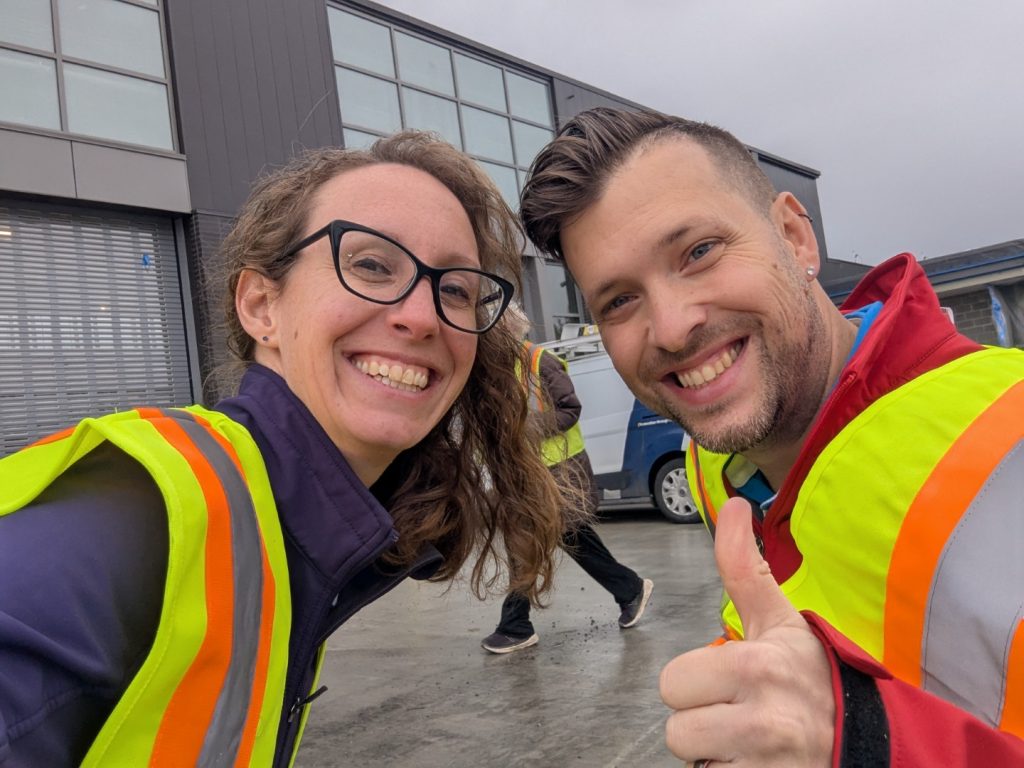
Editor’s Note: Earlier this year, Western Built writer Rich Cowan had the chance to speak with Marco Pasqua for an article that is featured in the Fall 2025 edition. The conversation was so informative, we’ve decided to feature it in full as a blog.
To learn more about Meaningful Access Consulting, visit www.meaningfulaccess.com.
Rich Cowan (RC): Can you start by telling us why the topic of accessible spaces is so important to you?
Marco Pasqua (MP): For sure. For those who don’t know, I was born with cerebral palsy, and for me, it’s called spastic triplegia, which means it affects three limbs: my two legs and my right arm. As a result, I use a manual wheelchair to get around, so not only do I have the job title of accessibility consultant and inspirational speaker, but I literally live it every single day because I’ve had my disability from birth. I have had 40 years of navigating the world, and hopefully opening people’s eyes to what’s possible with the right accommodations and tools.
RC: It’s inspiring to see people take something that could be perceived as a negative and turn it into a positive – especially to help others.
MP: You know, what my wife Karin and I do is such a blessing. In fact, I have to pinch myself half the time to be like, ‘Is this really what I do for work?’ Because you know, universal design is something that was, even recently, such a foreign concept to a lot of people.
RC: So, let’s dive into it – can you explain the concept of universal design?
MP: Yes. It was first discussed back in the mid-1980s by an architect by the name of Ron Mace, and he developed the 7 Principles of Universal Design as a way of approaching not only the environment, but also products that we use in a way that is functional and easy to use. Basically, whether you are 2 or 92, you should be able to walk into a space, or roll into a space, or however you present yourself, and you should be able to use the products and services presented in the way in which they’re intended, without having to adapt yourself to the environment.
RC: So, as opposed to you adapting yourself to the environment, the environment is, essentially, considering your needs?
MP: Exactly. For example, one of the principles is flexibility in use. If someone has dexterity issues, like they’re not able to turn a traditional doorknob, does the design consider things like lever handles, so that if somebody had paralysis, or isn’t able to open up their hand, could they open a door with a closed fist or with an elbow? It’s this kind of forethought that most people don’t think about, and it is where universal design really comes into play, essentially going above and beyond the standard building codes.
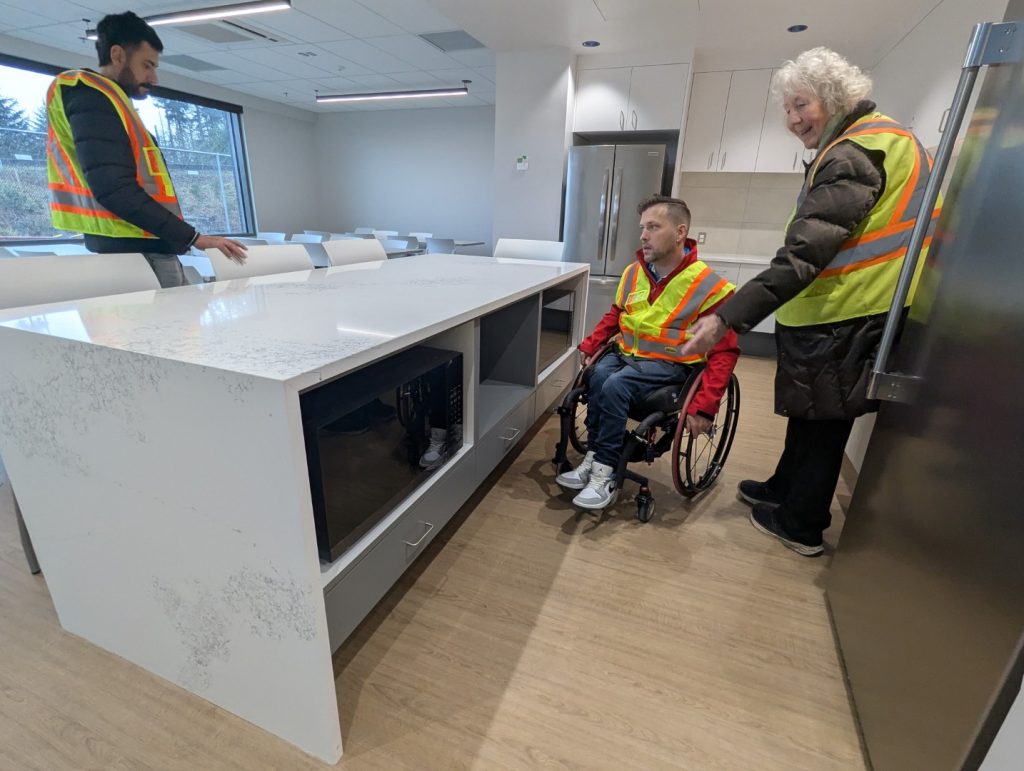
RC: If universal design goes above and beyond the standard building codes, where do building and space designers even begin?
MP: My wife and I work a lot with building designers and facility managers, and they’ll say to me, ‘You know, Marco, Karin, we don’t really understand, what do you mean? We built this site to code. How can you consider it not accessible?’
People don’t realize that code really is the bare minimum standard to get somebody into a space. It’s not necessarily about them functioning within that space and meaningfully participating in that space.
This is why we called our company Meaningful Access Consulting, because there’s a difference between accessibility and meaningful access. Accessibility means that, sure, you can access these features, but you might have to go about it in a different way, or a roundabout way, in order to use them, and you still might not be able to use them in all of the ways that they’re intended, but it is semi-accessible for you to enjoy yourself. Meaningful access means that not only can you access those things, but it means that forethought was put into how somebody is using this feature; how they are participating in this space.
Universal design considers things like the types of population that are in the area, and how that might impact people. How old are they? What are the kinds of disabilities that they have? There is a lot of planning that goes into thinking of accessibility from a universal design and meaningful access perspective.
RC: Can you speak about the education aspect, about the teaching industry, about the importance of universal design?
MP: I work with the Rick Hansen Foundation to do actual assessments and ratings of spaces, and also to provide disability awareness training to different corporations and businesses. That’s the other side of the equation; it can’t just be about me coming in and giving them a laundry list of things that they can improve, it’s also about giving them the ‘why’ beforehand.
It’s important that businesses understand that this isn’t just about installing an expensive elevator; there’s more to it. Not only is universal design going to help you look better as a business, but it’s actually going to increase your ability to make more money; the more accessible or universally designed that a business is, the more likely that somebody with a disability is going to shop there. There’s an interesting stigma that if somebody has a disability, it must mean that they don’t have a lot of money. But remember, it’s not just the person with a disability, it’s their friends, family members, and loved ones.
A Statistics Canada study from 2022 showed that 27 per cent of our country, or eight million people, identify as having one or more disability. But when you expand that thinking, to their friends and family, it’s up to as many as 50 per cent of Canadians who are touched by disability. By that I mean they may not have a disability themselves, but there may be a caregiver, a friend, or a family member who does. And who’s to say an able-bodied person today may not become disabled tomorrow – even temporarily.
This is why universal design planning not only helps me today, but it might help you tomorrow. This isn’t about me doing this for “other Marcos of the world.” I’m actually doing this for everyone, because a more accessible world is a better world for everybody.
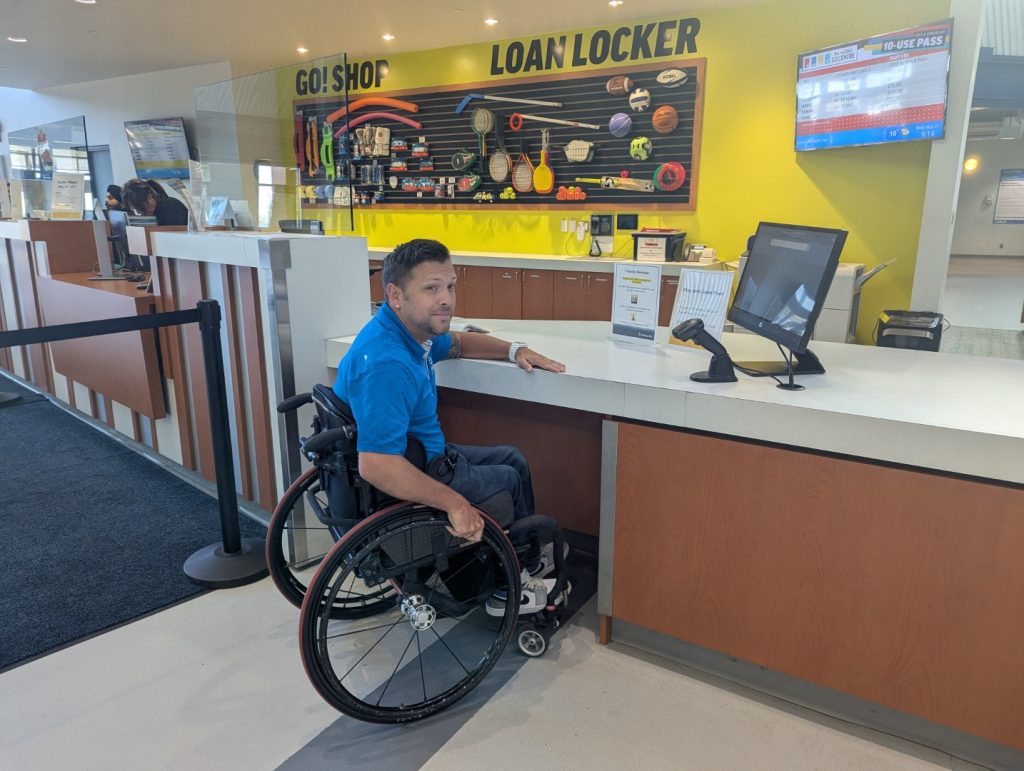
RC: What strategies can you suggest for those who want to integrate universal design principles into their built environment?
MP: I think the number one takeaway for anyone who’s reading this article will be, don’t be afraid to hire an accessibility professional. So many people think they have to self-educate, but that’s the wrong way to go about it because you might miss some nuances or some details.
If you are considering creating a request for a proposal, or you’re creating a new site or development, really make sure that from the get-go, you’re actually encouraging your team to have an accessibility professional as part of the team from the beginning, even in the blueprint phase.
The reason this is important is that having that professional’s lens supporting you throughout the different construction iterations or planning and designing stages of any project will mean that you could be saving tens of thousands of dollars, because if I can look at something at the blueprint phase and say, well, actually, you just need to widen this a little bit more, or move this doorway, it certainly makes a big difference versus taking a sledgehammer to a 2×4 and rebuilding from scratch.
Local organizations, like Disability Service Organizations, that specialize in working with different populations, like the Canadian National Institute for the Blind, or the Cerebral Palsy Association, or organizations that you want to learn more about a particular type of disability, don’t be afraid to cold call. Pick up the phone and call that organization and say, listen, my staff is looking to learn more about how these disabilities impact the people that you serve. Would you be willing to have somebody come by and give us some insights on how we can improve our spaces? You wouldn’t believe the number of people who are willing and open to come in as part of that consultation or even providing committees or subcommittees and focus groups that specialize in what you’re planning on renovating or building.
Get that insight early on. Don’t treat it as an afterthought.
I would also say, have a member of your team trained in the Rick Hansen Accessibility Certification (RHFAC) Program. I’ve seen companies do this for their employees, where architects are now fully trained accessibility specialists, and this puts them a leg above their competition because now they have in-house architects who understand the best practices of universal design and accessibility.
I would encourage any organization, whether it’s a construction company, an architecture, design firm, etc., the best way that you can educate yourself is to actually get the training. It is offered digitally as well as in-person now, so you don’t even have to physically go to a location; you can get that training and insight however it works for your company and employees.
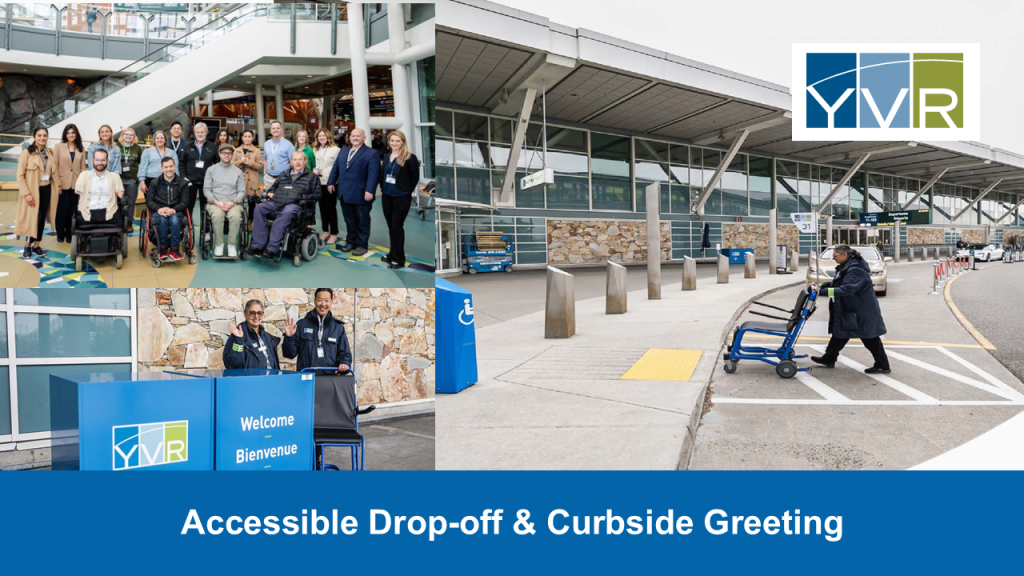
RC: Can you provide examples of where universal design is being done well?
MP: Vancouver International Airport is one of the most accessible airports across all of North America. When they got rated initially by the Rick Hansen system, they got 96 per cent Gold on our system, which is one of the highest ratings in the entire country. The reason is that a lot of the universal design at the airport, you don’t even see. Some of the accessibility features that are the best are the ones that you don’t even recognize.
For example, let me talk about acoustics at the airport – the art hanging on the ceiling is a part of their universal design. Of course, it looks beautiful, but people don’t realize it was strategically installed where it is, with the materials that are used, because it offers sound dampening, which is great for people who have anxiety or even are hard of hearing, because all that clacking and moving of bags can be very distracting. It’s one of the quietest airports in North America!
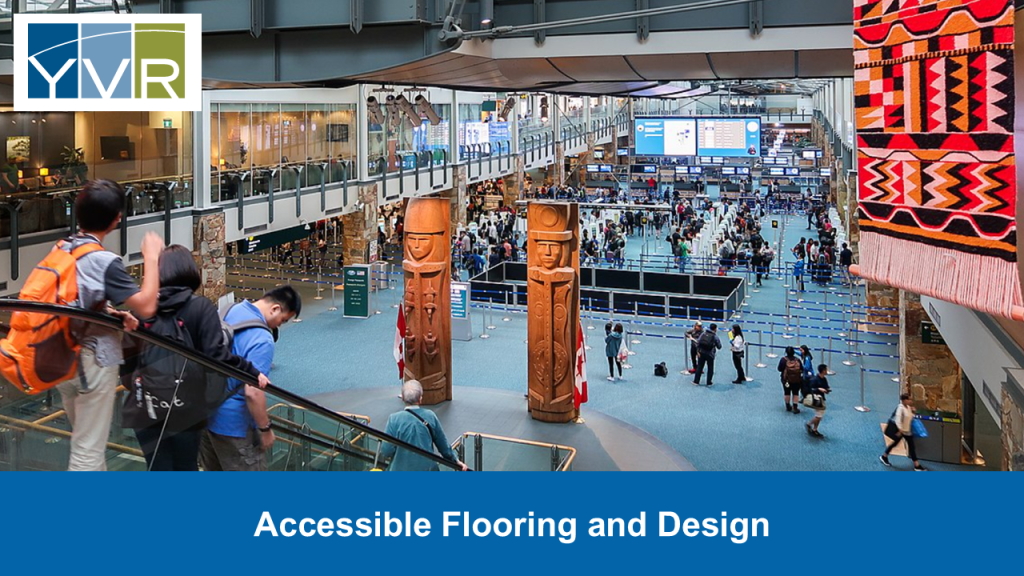
Another example is the flooring, which is designed in such a way that if you’re blind, and if you’re using a cane to navigate the airport, depending on the surface that you’re on, it means that you’re in a different area of the airport. So, if you’re in a tiled location, it means that you’re probably heading towards a service counter. If you’re in a carpeted area, it means that you’re probably heading towards a gate, and if you’re in a hardwood area of flooring, it means that you’re likely in a store or retail front of some sort.
We are also working for BC Transit right now to review the accessibility of their brand new HandyDart facilities, as well as their bus stop facilities. They want to ensure that their facilities are accessible, not just from a customer-facing perspective, but also from an employability perspective. They want to know the grounds are accessible so that if somebody had a disability, but was also an employee of BC Transit, they’d be able to navigate and work within their space.
RC: What final thoughts would you like to share with our readers?
MP: I’d like the construction professionals reading this to think about how somebody’s going to navigate their journey from the moment that they wake up in their own bed, to getting to your space, so it’s not just about how they navigate your building itself, but how close is the local transit station? If they don’t use a vehicle, how are they getting to your site? If they do use a vehicle, do you have accessible parking? How much accessible parking do you have?
Once they get into your space, how easily are they able to locate the building, or the meeting rooms, or any of the spaces that you’d like them to get to, and can they do that independently? And then ask yourself, could they do that independently if they were blind? Could they do that independently if they were deaf? Really think about how you’re intentionally designing your spaces so that they work for a wide variety of people.
Think about signs and the contrast of lettering. Think about how people from other countries, who speak other languages, would find their way around in your space. Think about how users with cognitive disabilities would navigate your buildings.
RC: I’m so inspired by you. So, thank you – this has been a really, really good conversation. I’ve enjoyed it immensely.
MP: Thank you! I am excited to share this information with construction leaders across Canada and would ask that they reach out to me to learn more about universal design, accessibility, and their next steps on this learning journey.
To reach Marco and Karin, visit www.meaningfulaccess.com. Meaningful Access Consulting is an award-winning universal design and accessibility consulting firm working with developers, designers, and city planners to create spaces that include all members of the community.


Leave a Reply